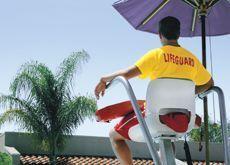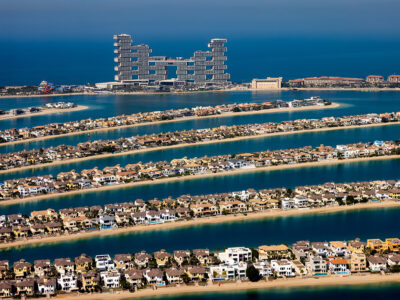Once you have recruited, trained and established a lifeguard service at your facility, whether it be a small pool, beach or full-service waterpark, there are some fundamental, ongoing considerations to be made in terms of the lifeguards’ uniform and equipment.
A lifeguard must be immediately recognisable, so a distinctive, non-restrictive uniform should be worn.
Internationally-recognisable lifeguard uniforms consist of a bright yellow t-shirt labelled with ‘lifeguard’ and red shorts. Colours such as blue and white are not recommended as they don’t stand out among the bathers .
Additionally, a red hat for sun protection as well as sunglasses to overcome sun glare are advisable. Shoes should have non-slippery soles and be easy to kick off in an emergency. Lifeguards should not wear any jewellery or bulky watches.
Consideration must also be given to communication tools. A whistle for each lifeguard is a minimum. However, for bigger facilities, radios, mobile telephones, megaphones, personal alarm systems or site alarm systems may be necessary.
Advanced technology such as underwater drowning detectors and alarms or CCTV can be a very useful support, but they will never replace the lifeguard. Their use and signals must be agreed on in advance and included in the facility’s normal operating procedure (NOP).
Of course, lifeguards will also require rescue equipment. Dubai Municipality guidelines require that every pool facility has rescue rings and a lift (pole). It is advisable to purchase soft polyester life rings as the ones made of hard plastic material could cause head injuries on contact.
Besides this, other equipment such as lifeguard torpedoes, ropes or throw bags should be made available as well. Floatable spine boards should be accessible at each pool/beach site; they are essential for the rescue of casualties with spinal injuries .
Beach facilities may also consider having fins, rescue skis, paddle crafts, jet skis or even motor boats to enable a fast and safe rescue in the event of strong currents, high waves and long distances.
Administering first aid
A first aid kit must be available at the pool side and beach area. In accordance with standards set by international first aid organisations such as the Red Cross, the first aid box should be green with a white cross, or at least be all the same colour.
A first aid box must have the following as a minimum: a guidance card, adhesive dressings, bandages, dressings in different sizes, eye pads, triangular bandages, safety pins and gloves. Additional items could be: tweezers, cold packs, alcohol wipes, scissors, bandages, adhesive tape and eye wash.
Paracetamol and Aspirin should not be included as a first aider is not permitted to administer medication. To prevent the risk of allergic reactions or additional harm, only doctors and qualified nurses can administer and prescribe medication.
Dubai Municipality requires that resuscitation equipment using ordinary air is available . Usually, a hotel’s nurse/doctor is the person qualified to use the equipment, but with standalone pools, lifeguards can receive additional training in the use of the resuscitator. Alternatively, lifeguards may use pocket masks which are easier to handle but still effective.
Extended Life Support
Operators should consider equipping lifeguards with transportable oxygen cylinders, for use in the case of shock, asthma attacks, head injuries and heart attacks and a manual suction pump to remove vomit from the mouth of an unconscious casualty.
The purchase of Automated External Defibrillators (AEDs) is another option, especially for larger facilities or hotels in areas where long waiting times for ambulances are experienced. The best survival rate is achieved if the AED is applied within the first 10 minutes of a cardiac arrest.
Statistics from St John Ambulance UK and the American Heart Association have shown that by having trained first aid officers onsite along with the availability of AEDs, the chances of survival for heart attack victims from increases from around a 20% recovery rate to 90%.
Once the basics for a safe and effective lifeguard operation have been set up, work still needs to continue as the lifeguards and standard operating procedures need regular and thorough reviewing, training and improvement.
Lifeguards must regularly train in their working environment to familiarise themselves with specific areas and procedures, the use of their equipment and the improvement of their team work.








